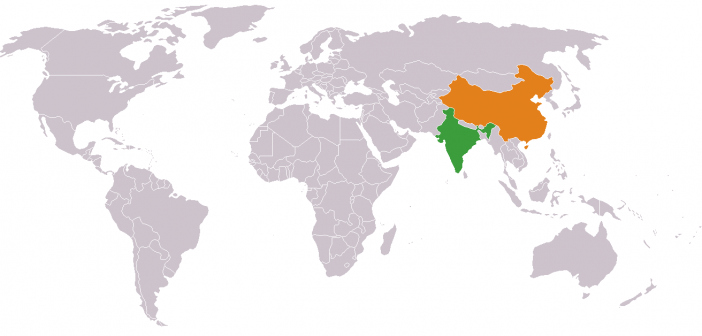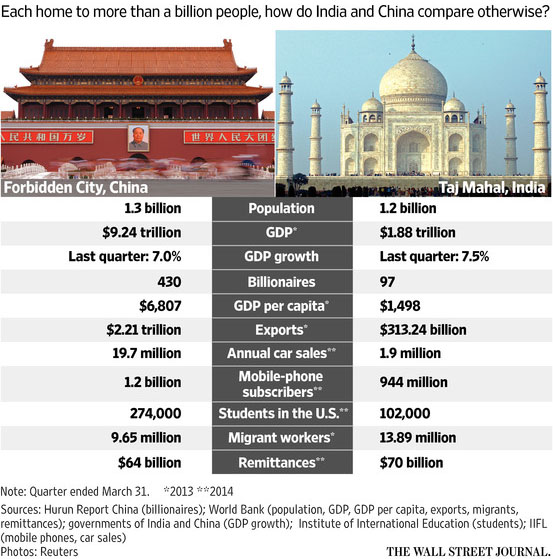Wall Street Journal
Last week the Wall Street Journal posted on their blog ’11 Numbers Showing India Has A Long Way to Go to Become The Next China’. Just because it’s the Wall Street Journal, doesn’t mean you have to take everything they say seriously. Ask questions and tear it apart (as I do) and you might be surprised to find that at times, the Wall Street Journal can be as banal as any South Asian daily is.
Come on World Street Journal – this comparison is unbecoming of the journalistic aptitude of your paper.
Wall Street Journal: China vs. India
Why we feel the Wall Street Journal has been overly pessimistic
The Wall Street Journal should understand creativity and innovation defines a nation not the number of billionaires. Furthermore, the wealth gets concentrated in fewer hands hence the Gini coefficient society – the ratio that signals distribution of wealth in a society- gets skewed. Even 97 of those are not good for India, most of them are regretfully hoarders of capital. They make opulent houses not great model villages. Unlike Gates and Warren Buffet who are wealth creators and philanthropists in USA, even Deng-era Billionaires are a drag. A balanced distribution of wealth is an ideal that every capital society ideally pursues.
Egalitarianism and freedom of opportunities among the general populace is one great factor that sets the future course of a nation. On that, the ingrained inequality in India puts it in the minus column. But perhaps the democracy of India is far more advantageous over the ‘one state fragile apparatus of China?’ Rather a huge plus if you ask me.
The Wall Street Journal should not ignore the enthusiasm across India for development of the manufacturing industry either. Narendra Modi, as a former chief minister of Gujarat, understands the importance of manufacturing capabilities. ‘Make in India’ has proved stunningly popular and Modi has ascended on a personal mission to promote the initiative to the rest of the world.
The competitive advantage of the number of peer reviewed research papers the two countries are producing, shall determine who will rule the next 100 years of progress. Indeed, the kind of graduates learning at the higher institutes and universities of the two countries shall determine the future giant amongst the two in future. So perhaps the Wall Street Journal would do well to look at both Chinese and Indian universities.
The Wall Street Journal failed to mention the number of Indians leading top Nasdaq companies; it is mind boggling. Why? There must be a great amount of brain and intellectual capital being churned out by India, whereas China is churning out global consumer products keeping inflation under check. Plus, don’t forget, China is an exporter of capital to hungry US capital markets.
I wish the Wall Street Journal would have done a little better in its comparison than these very shallow parameters of mobile ownerships and size of exports. At the moment, I definitely agree there is not much of a comparison between the two (India has a lot to catch up on) but I believe that if India can ensure egalitarianism and arrest the poverty within its ranks, the sky is the limit.







3 Comments
A very insightful and grounded response, Iqbalbhai.
We Indans, however, have been guilty of underachieving against our potential. Wall Street’s figures show up this reality.
Only now we have begun shaking off the self doubt and Modi must be acknowledged as a leading light for the self belief movement.
cheap viagra no prescription
http://viagrawithouta-doctorprescription.net – viagra without a doctor prescription viagra dosage forms help
viagra without a doctor prescription – viagra online usa show posts
viagra cheap
viagra 10mg or 20mg login
http://viagrawithouta-doctorprescription.net – viagra without a doctor prescription viagra more:drug_uses
viagra without a doctor prescription – viagra total posts
viagra commercial real welcome guest. please login